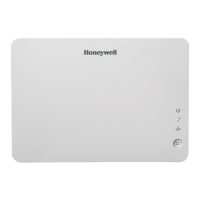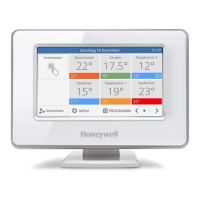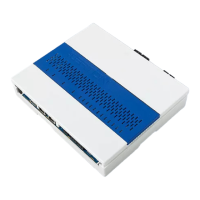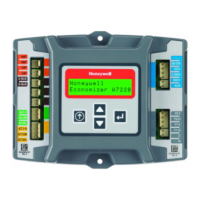ENGINEERING MANUAL OF AUTOMATION CONTROL
ELECTRONIC CONTROL FUNDAMENTALS
121
Electronic controller: A solid-sta te device usuall y consisting
of a power suppl y, a sensor amplif ication cir cuit, a
process/compar ing circuit, an output dr iver section,
and var ious components tha t sense chang es in the
contr olled var iable and der ive a contr ol output w hich
provides a specific contr ol function. In g ener al,
adjustments such as setpoint and throttling range
necessary for the process can be done at the controller
via potentiometers and/or switches.
Final control element: A device such as a valve or damper
tha t chang es the value of the manipula ted var iable.
The final contr ol element is positioned b y an actua tor.
Integral action (I): An action in w hich ther e is a contin uous
linear relationship between the amount of increase (or
decrease) on the output to the f inal contr ol element
and the de viation of the contr olled var iable to r educe
or elimina te the de viation or of fset.
Limit sensor: A device which senses a var iable tha t may be
other than the contr olled var iable and o verrides the
main sensor at a preset limit.
Main sensor: A device or component tha t measur es the var iable
to be controlled.
Negative (reverse) compensation: A compensa ting action
wher e a decr ease in the compensa tion var iable has the
same effect as an incr ease in the contr olled var iable.
For example , in a hea ting a pplica tion as the outdoor
air temperature decreases, the control point of the
contr olled var iable incr eases. Also called “winter r eset
or compensation”.
Offset: A sustained de viation betw een the contr ol point and
the setpoint of a proportional control system under
stable operating conditions. Also called Deviation.
Positive (direct) compensation: A compensa ting action w her e
an incr ease in the compensa tion var iable has the same
effect as an incr ease in the contr olled variable. For
example , in a cooling a pplica tion as the outdoor air
temperature increases, the control point of the
contr olled var iable incr eases. Also called “summer
reset or compensation”.
Proportional band (throttling range): In a pr opor tional
contr oller, the contr ol point r ange thr ough which the
contr olled var iable must pass to dr ive the final contr ol
element through its full operating range. Proportional
band is e xpr essed in per cent of the main sensor span.
A commonly used equi valent is “thr ottling r ange”
which is expr essed in values of the contr olled var iable.
Proportional control (P): A contr ol algorithm or method in
which the final contr ol element mo ves to a position
proportional to the de viation of the v alue of the
contr olled var iable from the setpoint.
Proportional-integral (PI) control: A contr ol algorithm tha t
combines the proportional (proportional response) and
integr al or de viation contr ol algorithms. Inte gral action
tends to cor rect the of fset r esulting fr om pr opor tional
contr ol. Also called “pr opor tional plus r eset” or “two-
mode” control.
Remote setpoint: A means f or adjusting the contr oller setpoint
from a remote location, in lieu of adjusting it at the
contr oller itself. The means of adjustment ma y be
man ual with a panel or space mounted potentiometer ,
or automa tic when a se par ate device pr ovides a signal
(voltage or r esistive) to the contr oller.
Reset control: See Compensa tion Contr ol.
Reset sensor: See Compensa tion Sensor .
Reverse acting: A reverse acting contr oller decr eases its output
signal on an increase in input signal.
Setpoint: The value on the contr oller scale a t which the
controller is set such as the desired room temperature
set on a ther mosta t. The setpoint is al ways referenced
to the main sensor (not the reset sensor).
Throttling range: In a proportional controller, the control
point rang e thr ough which the contr olled var iable must
pass to mo ve the final contr ol element thr ough its full
oper ating r ang e. Thr ottling r ange is expr essed in values
of the contr olled var iable such as temper atur e in
degrees Fahr enheit, relative humidity in per cent, or
pr essur e in pounds per squar e inch. A commonl y used
equivalent is “pr opor tional band” which is expr essed
in percent of sensor or transmitter span.
Transducer: A device tha t converts one ener gy form to another .
It amplif ies (or r educes) a signal so tha t the output of
a sensor or transducer is usable as an input to a
contr oller or actua tor. A transducer can con vert a
pneumatic signal to an electric signal (P/E transducer)
or vice versa (E/P tr ansducer), or it can con vert a
change in capacitance to an electrical signal.
Transmitter: A device tha t converts a sensor signal to an input
signal usa ble by a contr oller or displa y device. See
also Transducer .

